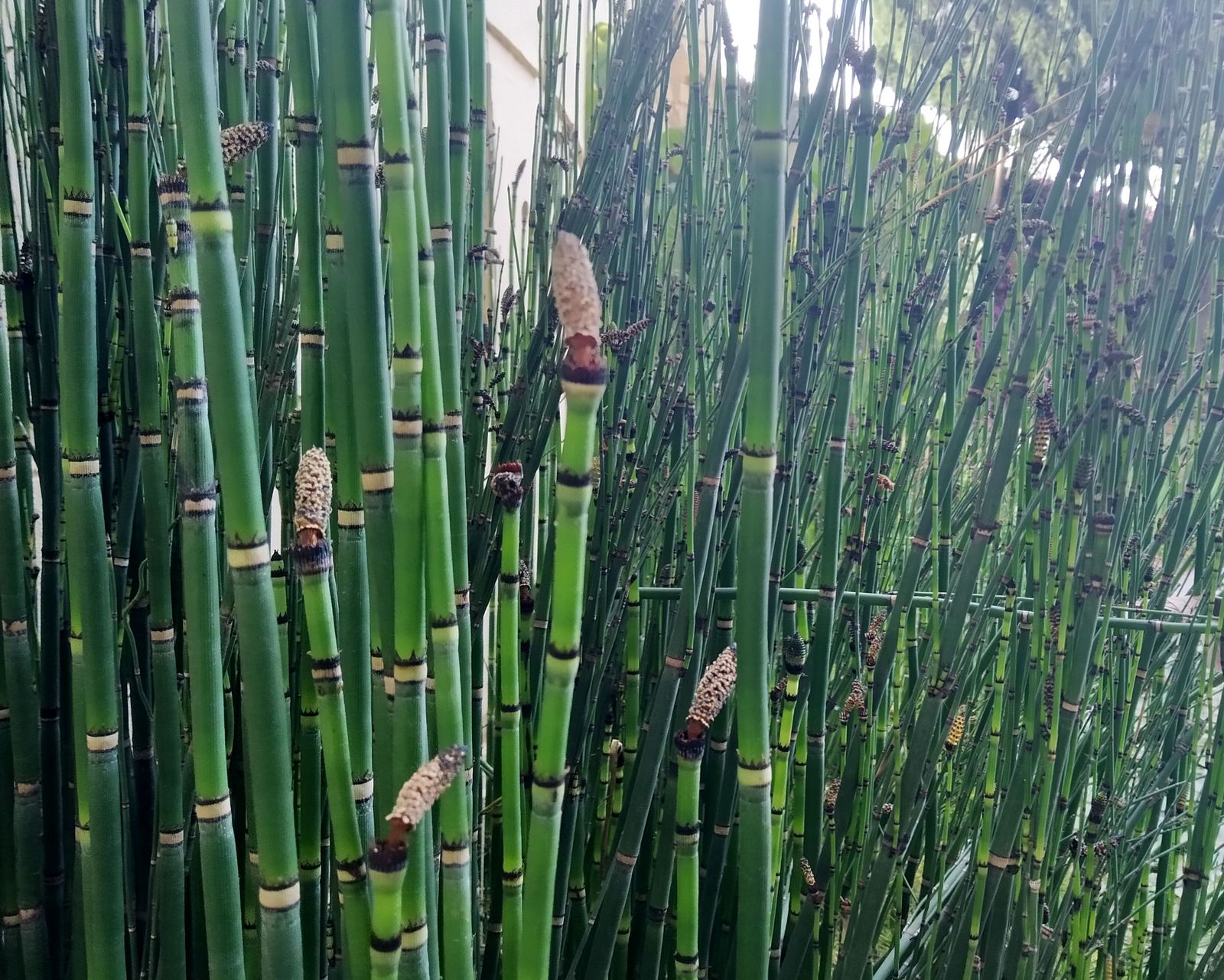Equisetum hyemale
Scientific name: Equisetum hyemale L.
Family: Equisetaceae
Common name: Canuela, Dutch Rush, Horsetail, Scouring Rush, Snake Grass
At the entrance to the garden there are some curious green canes; they have been placed next to the pond because they are a semi-aquatic species.
Echisetums have been on earth for a long time, reaching their peak in the Carboniferous period, some 300 million years ago. This species can grow up to 1.5 m high. It is a perennial herb that forms dense colonies, which can become invasive with abundant water, and is naturally distributed throughout the northern hemisphere. The genus name comes from the Latin equus, horse, and saeta, bristle or hair, in reference to its common name, horsetail; hyemale means winter, probably because growth occurs in winter.
It has hollow, ribbed stems, 1 cm in diameter, which are not usually branched; they contain chlorophyllous tissues capable of photosynthesis. The leaves are very small, tiny, and are attached in a toothed sheath at the nodes of the stems, forming a ring with a dark base, which is characteristic of this species. The rhizome, an underground stem, is long and highly branched.
Echisetums are non-flowering plants, so they have no fruit or seeds. They produce spores in elongated sporangia which are arranged in strobili (the cones we know as pine cones). The strobiles are located at the tip of the stems; they are about 15 mm long and have a black tip.
Horsetail grows well in sun or semi-shade. It has many medicinal properties, for treating digestive system problems or as a diuretic; in Mexico and Argentina it is widely used. It has a rough surface due to its silicon crystals, so it has been used for washing dishes, and in Japan as sandpaper.

